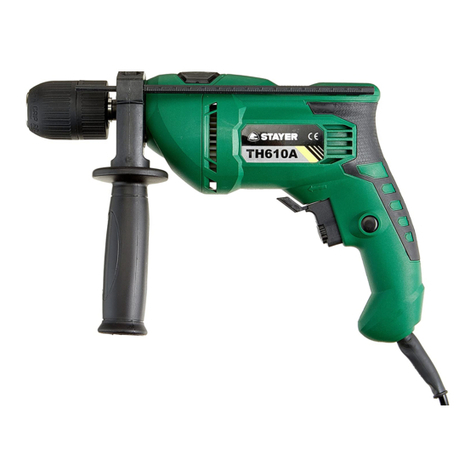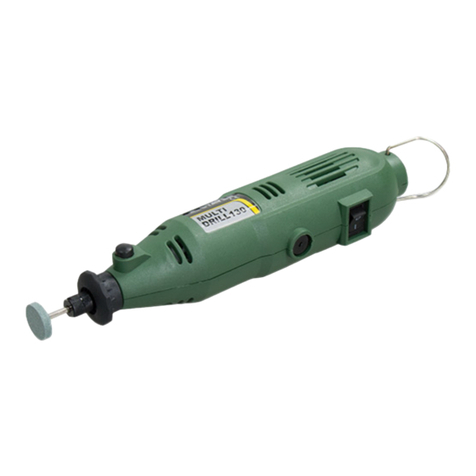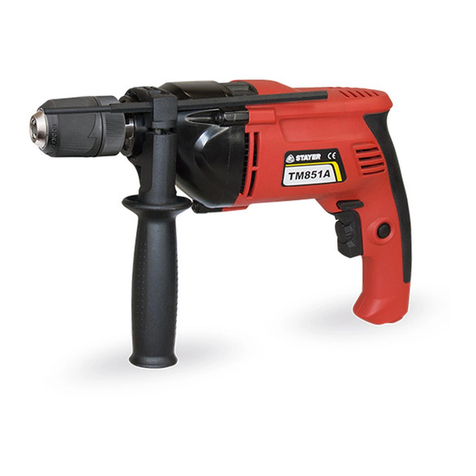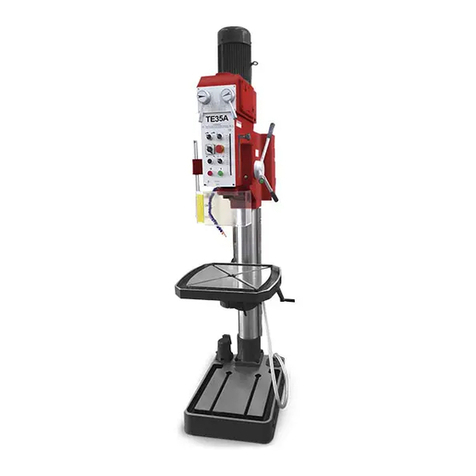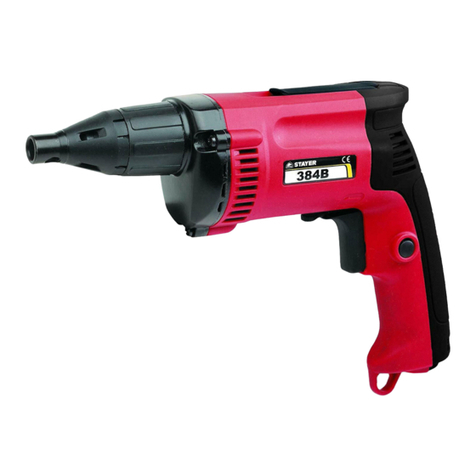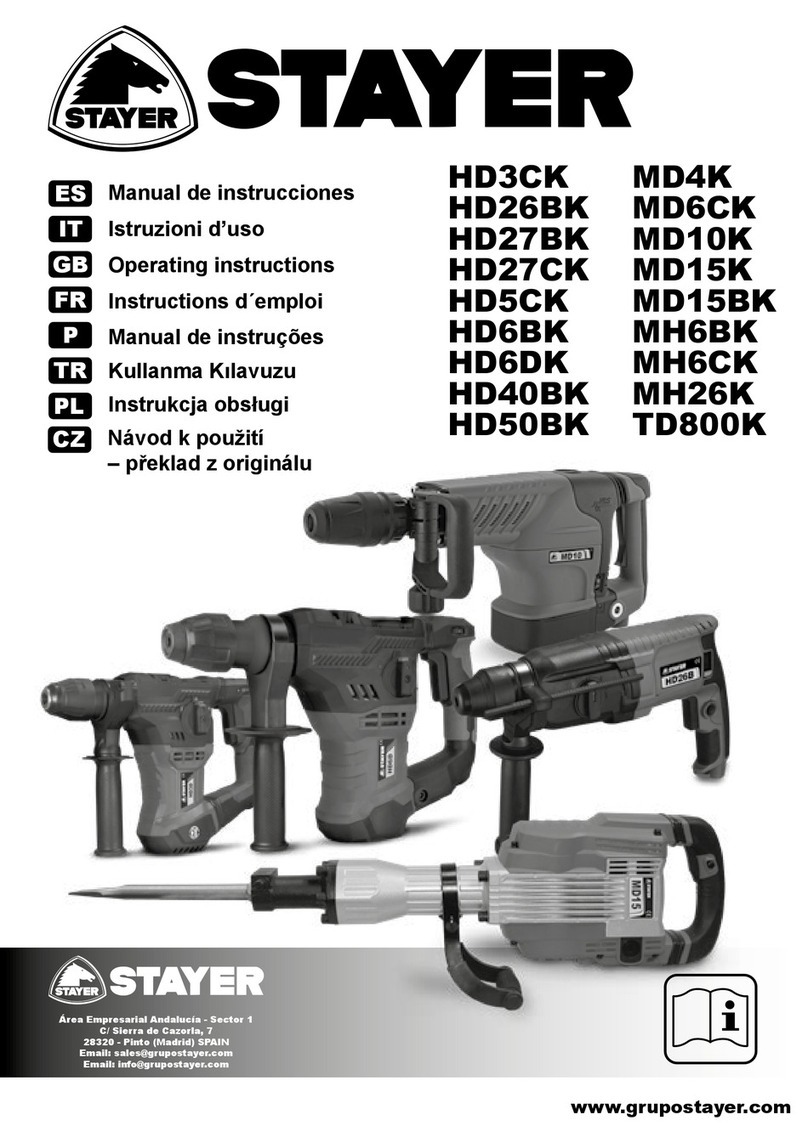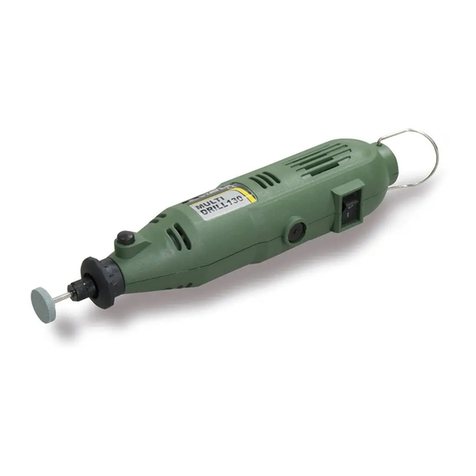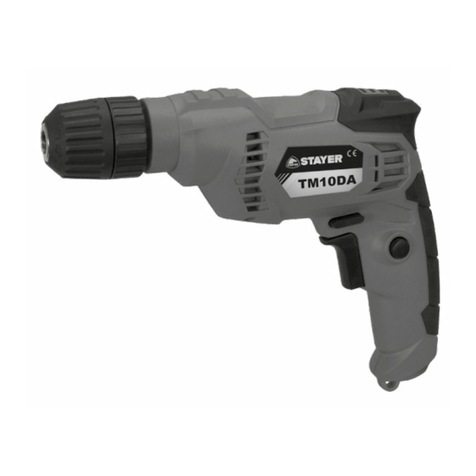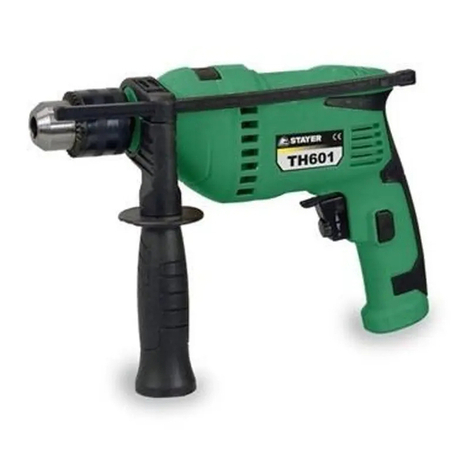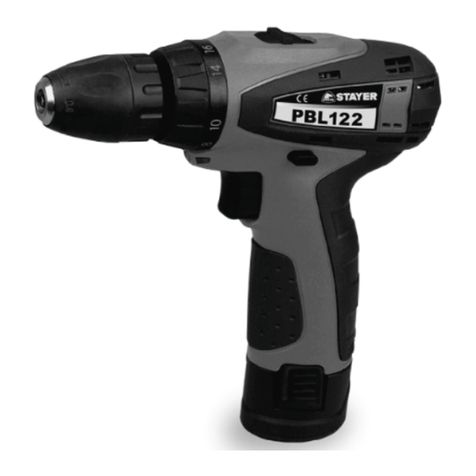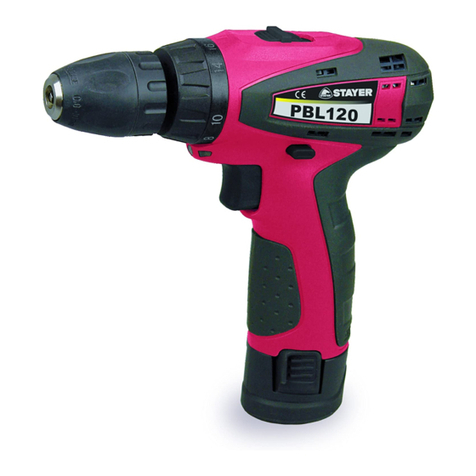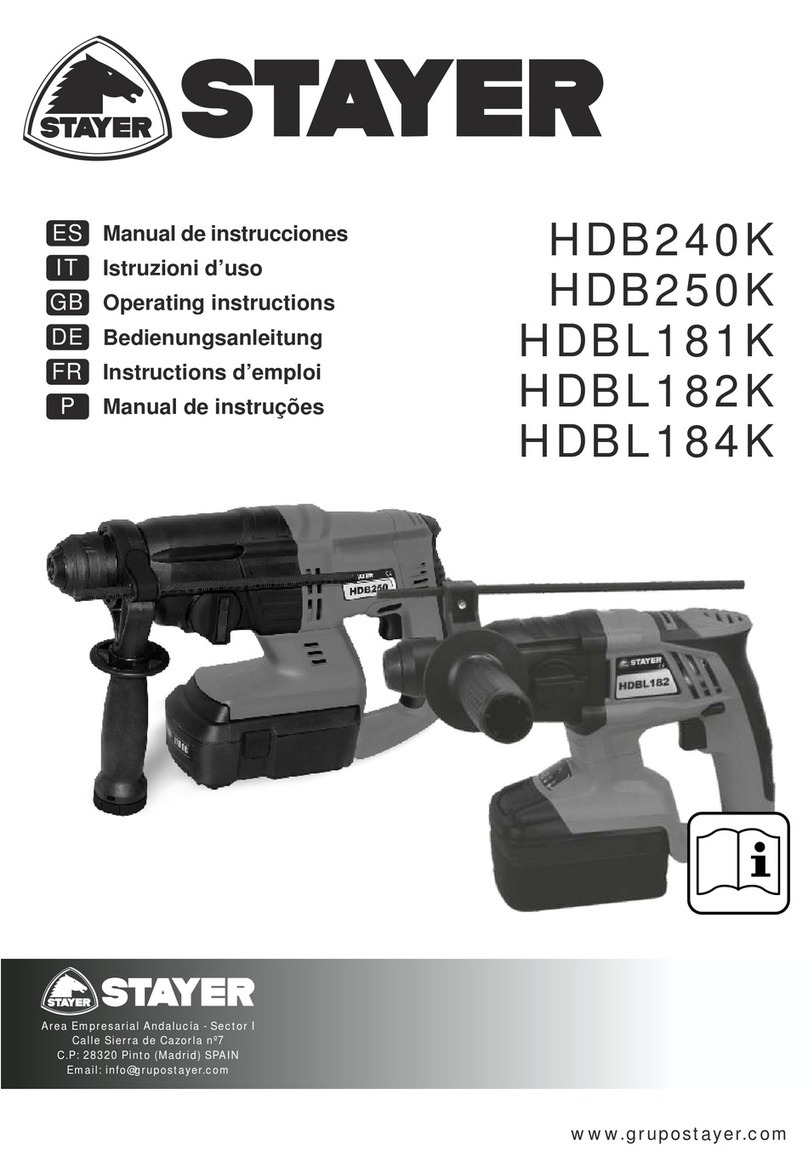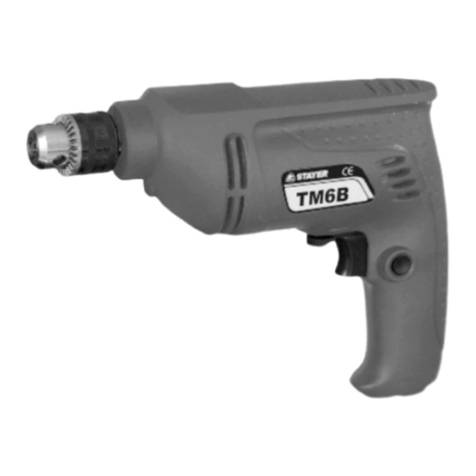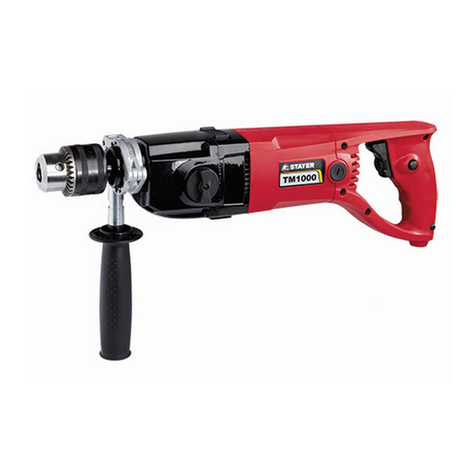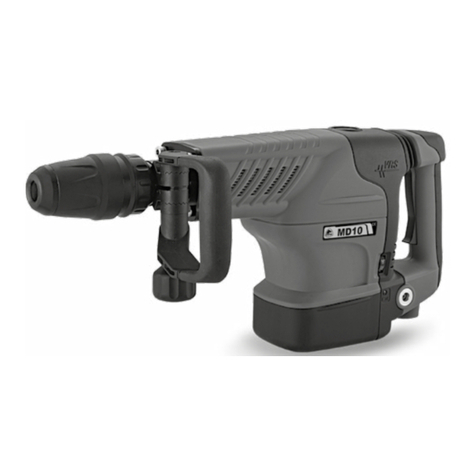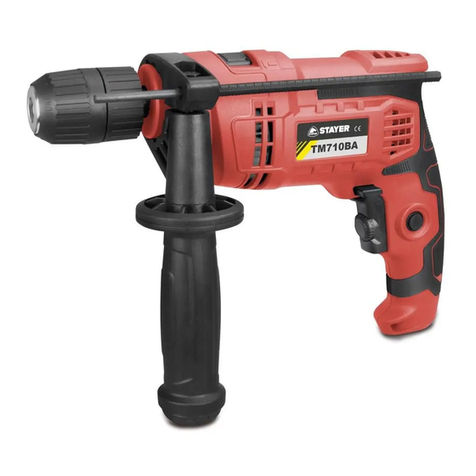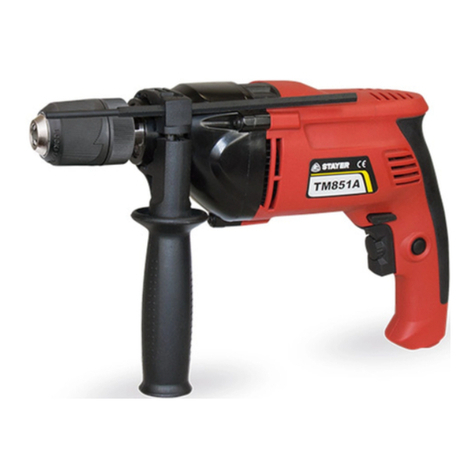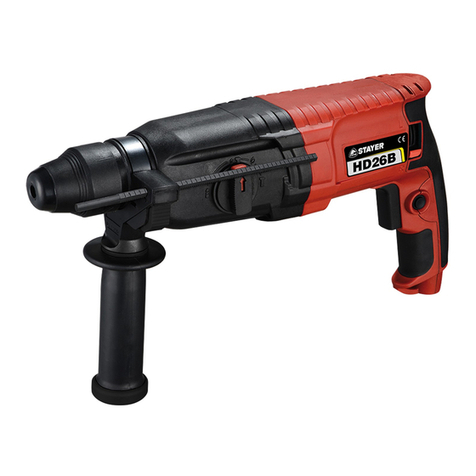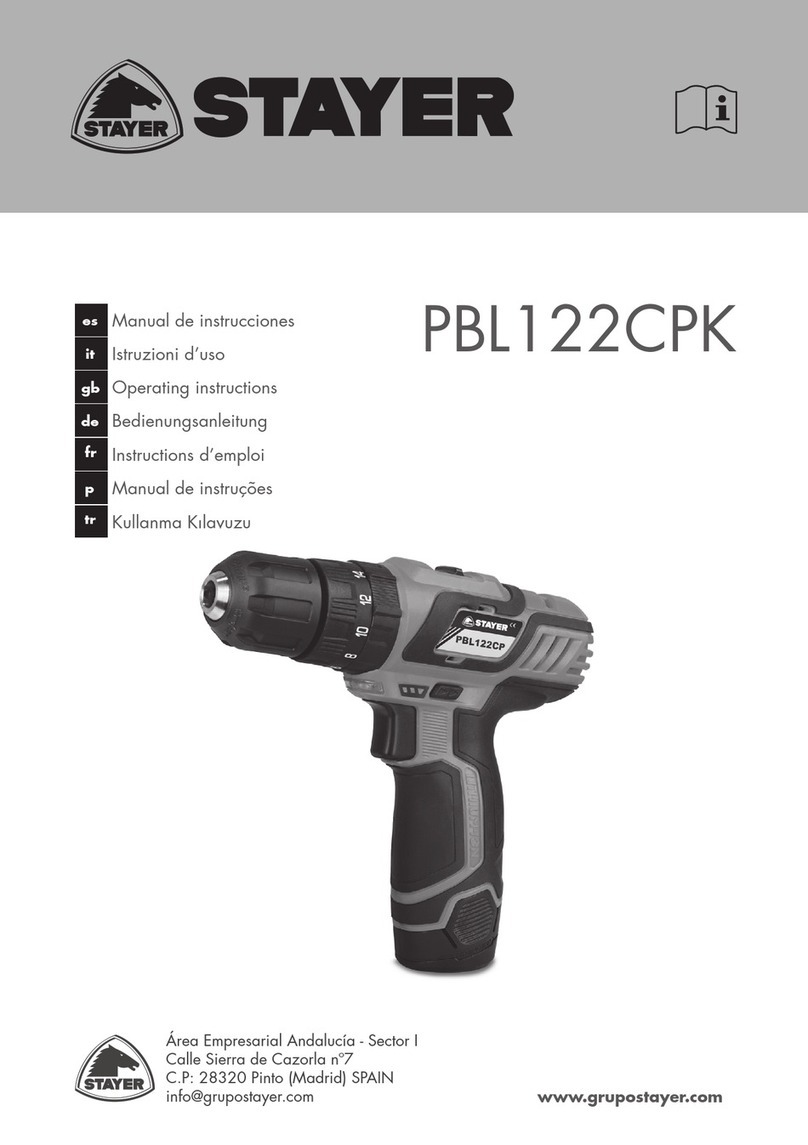
- 9 -
es
it
gb
fr
p
tr
gr
de
cz
Este manual es acorde con la fecha de fabricación de
su máquina, información que encontrará en la tabla de
datos técnicos de la maquina adquirida, buscar actua-
lizaciones de manuales de nuestras maquinas en la
página web: www.grupostayer.com
1_INSTRUCCIONES ESPECIFICAS DE
SEGURIDAD
Colóquese unos protectores auditivos al taladrar
con percusión. El ruido intenso puede provocar
sordera.
Emplee las empuñaduras adicionales suminis-
tradas con la herramienta eléctrica. La pérdida de
control sobre la herramienta eléctrica puede provocar
un accidente.
Sujete el aparato por las supercies de agarre ais-
ladas al realizar trabajos en los que el útil o el tor-
nillo pueda llegar a tocar conductores eléctricos
ocultos. El contacto con conductores bajo tensión
puede hacer que las partes metálicas de la herramien-
ta eléctrica le provoquen una descarga eléctrica.
Utilice unos aparatos de exploración adecuados
para detectar conductores o tuberías ocultas, o
consulte a sus compañías abastecedoras. El con-
tacto con conductores eléctricos puede provocar un
incendio o una electrocución. Al dañar una tubería
de gas puede producirse una explosión. La perfo-
ración de una tubería de agua puede causar daños
materiales.
Desconecte inmediatamente la herramienta eléc-
trica si el útil se bloquea. Esté preparado para so-
portar la elevada fuerza de reacción que ocasiona
un rechazo. El útil se bloquea:
— si la herramienta eléctrica se sobrecarga, o
— si éste se ladea en la pieza de trabajo.
Sujete rmemente la herramienta eléctrica. Al apre-
tar o aojar tornillos pueden presentarse bruscamente
unos elevados pares de reacción.
Asegure la pieza de trabajo. Una pieza de trabajo
jada con unos dispositivos de sujeción, o en un torni-
llo de banco, se mantiene sujeta de forma mucho más
segura que con la mano.
Mantenga limpio su puesto de trabajo. La mezcla
de diversos materiales es especialmente peligro-
sa. Las aleaciones ligeras en polvo pueden arder o
explotar.
Antes de depositarla, esperar a que se haya dete-
nido la herramienta eléctrica. El útil puede engan-
charse y hacerle perder el control sobre la herramien-
ta eléctrica.
No intente abrir el acumulador. Podría provocar un
cortocircuito.
Proteja el acumulador del calor como, p.ej., de una
exposición prolongada al sol y del fuego. Existe el
riesgo de explosión.
Si el acumulador se daña o usa de forma inapro-
piada puede que éste emane vapores. Ventile con
aire fresco el recinto y acuda a un médico
si nota alguna molestia. Los vapores pue-
den llegar a irritar las vías respiratorias.
Un acumulador defectuoso puede per-
der líquido y humedecer la piezas adyacentes.
Examine las piezas afectadas. Límpielas, o sustitú-
yalas si fuese necesario.
Únicamente utilice el acumulador en combinación
con su herramienta eléctrica Stayer. Solamente así
queda protegido el acumulador contra una sobrecarga
peligrosa.
2_INSTRUCCIONES DE PUESTA EN
SERVICIO
COLOCACIÓN
Lea íntegramente estas advertencias de
peligro e instrucciones. En caso de no
atenerse a las advertencias de peligro e
instrucciones siguientes, ello puede oca-
sionar una descarga eléctrica, un incendio
y/o lesión grave.
UTILIZACIÓN REGLAMENTARIA
La herramienta eléctrica ha sido diseñada para apre-
tar y aojar tornillos, para taladrar madera, metal,
cerámica y plástico y para taladrar con percusión en
ladrillo, hormigón y piedra.
DESCRIPCIÓN ILUSTRADA
La numeración de los componentes está referida a
la imagen de la herramienta eléctrica en la página
ilustrada.
1 Punta de atornillar.
2 Portabrocas de sujeción rápida.
3 Anillo de ajuste para preselección del par.
4 Selector de velocidad.
5 Acumulador.
6 Bombilla “Power Light”
7 Selector de sentido de giro / interruptor táctil
PBL202BL/PBL204BL.
8 Interruptor de conexión/desconexión / interruptor
táctil inverso PBL202BL/PBL204BL
9 Botón de extracción del acumulador.
10 Indicador del estado de carga del acumulador.
11 Botón de indicación de carga del acumulador.
